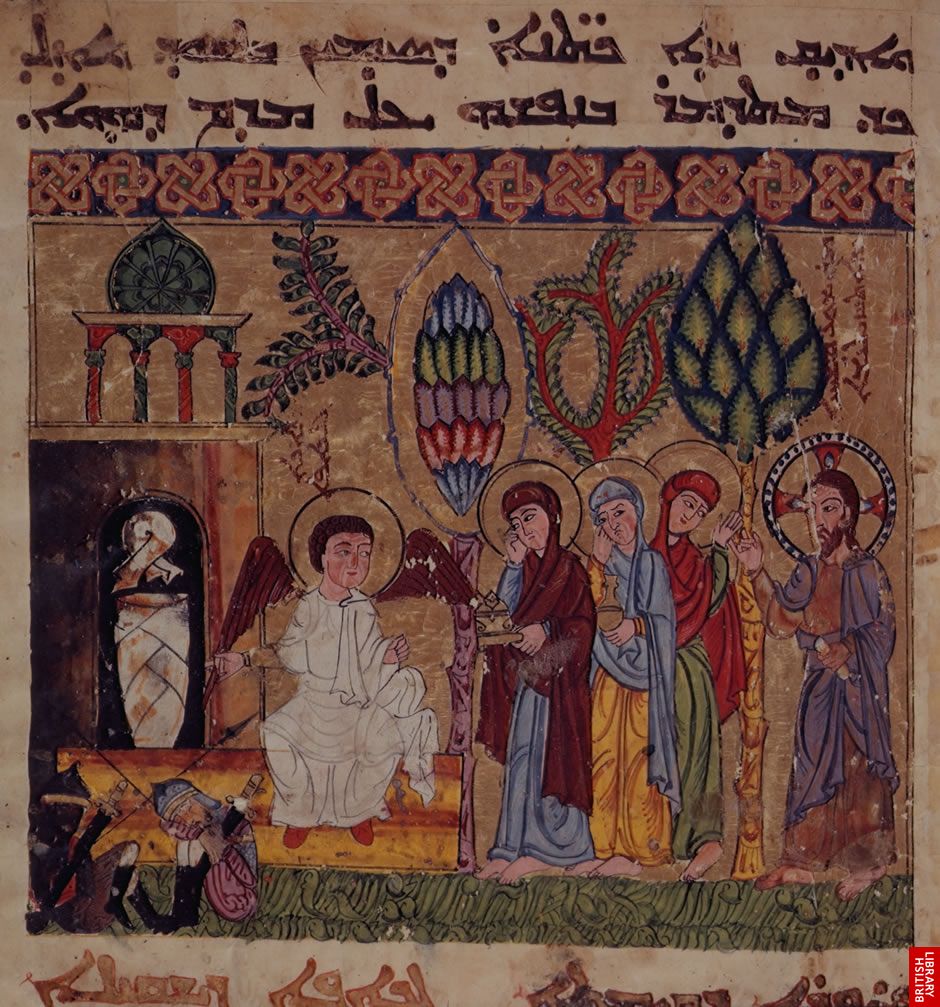Syriac Gospel Lectionary, 1216-1220
Syriac Gospel Lectionary, Northern Iraq, 1216–20. Holy Women at the Tomb
Syriac is the dialect of Eastern Aramaic that was spoken in the early Christian period in the principality of Edessa, which corresponds to present day northern Syria and Iraq, and southern Turkey. It is written in the same alphabet of 22 consonants as Hebrew, but with additional characters of its own.
The earliest Syriac books were biblical translations, and it has been debated whether one or more of the Four Gospels was originally composed in Syriac.
The image of the Holy Women visiting the tomb of Christ illustrates the text of St Matthew, in which he recounts that at dawn on the first day of the week St Mary Magdalene and the other Mary went to the tomb and saw an angel, who said to them- “Do not be afraid, for I know that you are looking for Jesus, who was crucified. He is not here; he has risen, just as he said.” (Matthew 28-5-6).
The manuscript shows a strong Byzantine influence in the choice of texts and style of illustrations. However, many of the details of the illustrations, such as trees, rocks, architecture, and much of the clothing, are Islamic in style.




